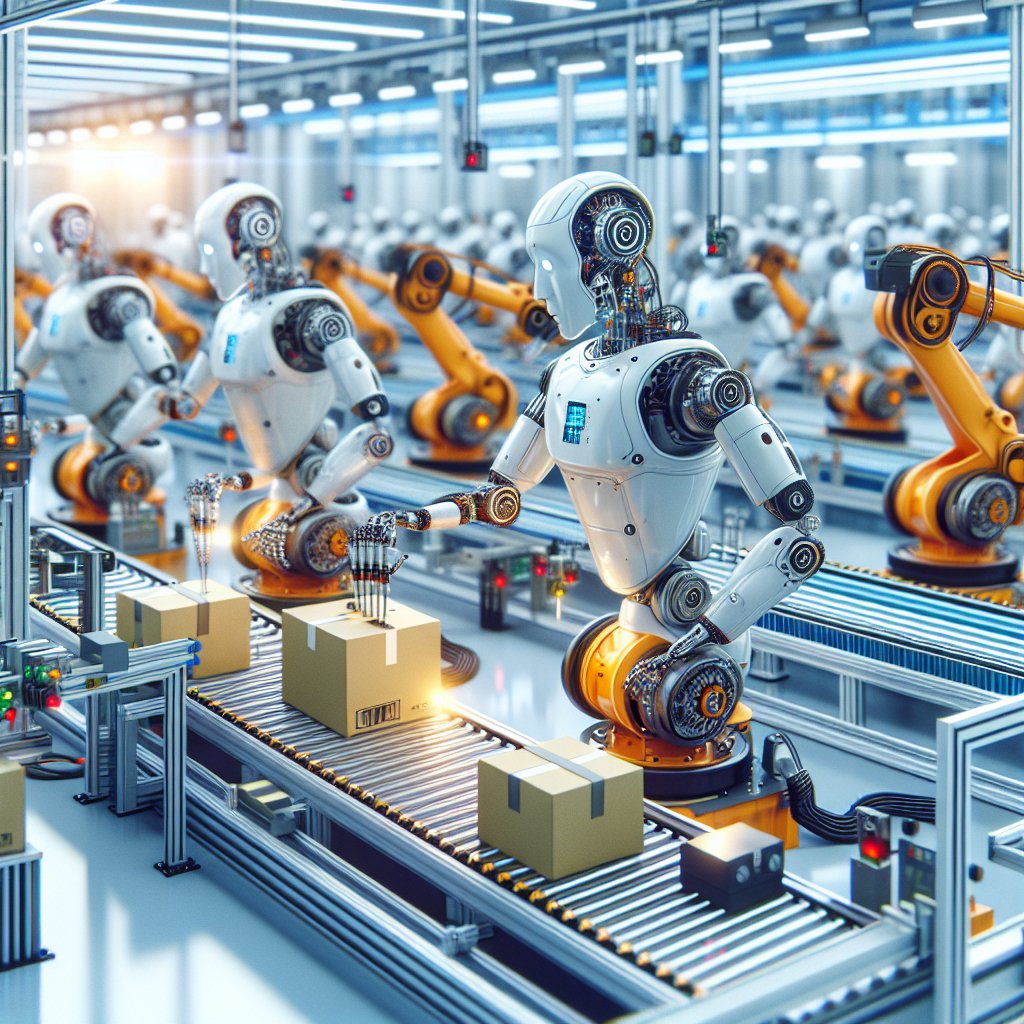
Robotics has become an integral part of modern manufacturing, revolutionizing the way products are designed, produced, and delivered. As industries strive for greater efficiency, precision, and cost-effectiveness, the adoption of robotic technologies has surged, transforming traditional manufacturing processes into highly automated and intelligent systems. This article explores the multifaceted role of robotics in contemporary manufacturing, highlighting its impact on productivity, quality, and the workforce.
The Evolution of Robotics in Manufacturing
The journey of robotics in manufacturing began in the mid-20th century, with the introduction of the first industrial robots. These early machines were primarily used for simple, repetitive tasks such as welding and assembly. Over the decades, advancements in technology have significantly expanded the capabilities of robots, enabling them to perform complex operations with high precision and speed.
Today, robotics in manufacturing encompasses a wide range of applications, from automated assembly lines to sophisticated robotic arms capable of intricate tasks. The integration of artificial intelligence and machine learning has further enhanced the adaptability and intelligence of these machines, allowing them to learn from their environment and improve their performance over time.
One of the key drivers behind the evolution of robotics in manufacturing is the demand for increased efficiency and productivity. By automating repetitive and labor-intensive tasks, manufacturers can reduce production times and minimize human error, leading to higher output and improved product quality. Additionally, robots can operate in hazardous environments, reducing the risk of injury to human workers and ensuring a safer workplace.
Impact on Productivity and Quality
The impact of robotics on productivity in manufacturing is profound. Automated systems can operate 24/7 without the need for breaks, significantly increasing the throughput of production lines. This continuous operation not only boosts productivity but also allows manufacturers to meet tight deadlines and respond quickly to market demands.
Moreover, the precision and consistency offered by robotic systems contribute to higher product quality. Unlike human workers, robots do not suffer from fatigue or distractions, ensuring that each task is performed with the same level of accuracy every time. This consistency is particularly crucial in industries where precision is paramount, such as electronics and automotive manufacturing.
Robotics also plays a vital role in quality control processes. Advanced vision systems and sensors enable robots to inspect products for defects and deviations from specifications, ensuring that only high-quality items reach the market. This capability not only enhances customer satisfaction but also reduces waste and rework, leading to cost savings for manufacturers.
Challenges and Opportunities
While the benefits of robotics in manufacturing are undeniable, the transition to automated systems presents several challenges. One of the primary concerns is the potential impact on the workforce. As robots take over tasks traditionally performed by humans, there is a growing need for workers to acquire new skills and adapt to changing job roles. This shift requires investment in training and education to ensure that the workforce remains competitive in an increasingly automated industry.
Another challenge is the initial cost of implementing robotic systems. The purchase and installation of advanced robotics can be expensive, particularly for small and medium-sized enterprises. However, the long-term benefits in terms of productivity and quality often outweigh the initial investment, making robotics a worthwhile consideration for manufacturers looking to stay competitive.
Despite these challenges, the opportunities presented by robotics in manufacturing are vast. The integration of robotics with other emerging technologies, such as the Internet of Things (IoT) and big data analytics, opens up new possibilities for smart manufacturing. These interconnected systems enable real-time monitoring and optimization of production processes, leading to further improvements in efficiency and flexibility.
The Future of Robotics in Manufacturing
As technology continues to advance, the role of robotics in manufacturing is set to expand even further. The development of collaborative robots, or cobots, is one of the most exciting trends in the industry. Unlike traditional industrial robots, cobots are designed to work alongside human workers, enhancing their capabilities and enabling more flexible and dynamic production environments.
Additionally, the rise of additive manufacturing, or 3D printing, is creating new opportunities for robotics in manufacturing. Robots equipped with 3D printing capabilities can produce complex parts and components on-demand, reducing the need for large inventories and enabling more customized production.
In conclusion, robotics is reshaping the landscape of modern manufacturing, offering unprecedented levels of efficiency, precision, and flexibility. As industries continue to embrace automation, the role of robotics will only grow, driving innovation and transforming the way products are made. While challenges remain, the potential benefits of robotics in manufacturing are immense, promising a future where intelligent machines and human ingenuity work hand in hand to create a more productive and sustainable world.

